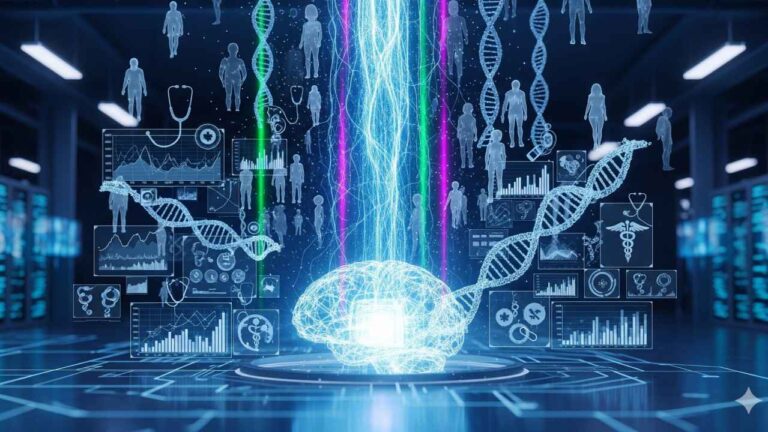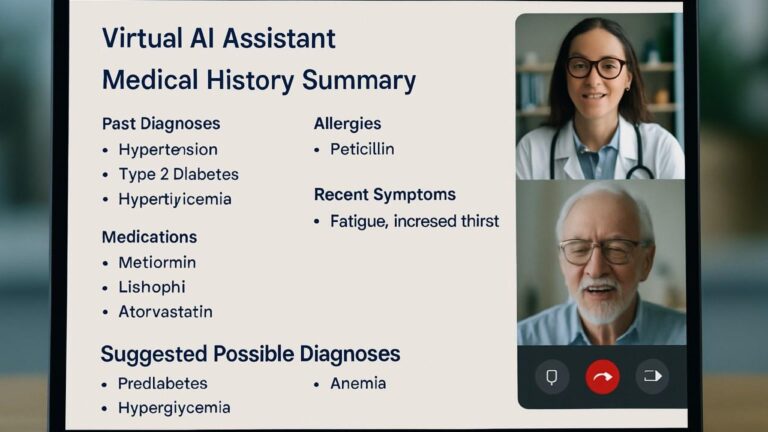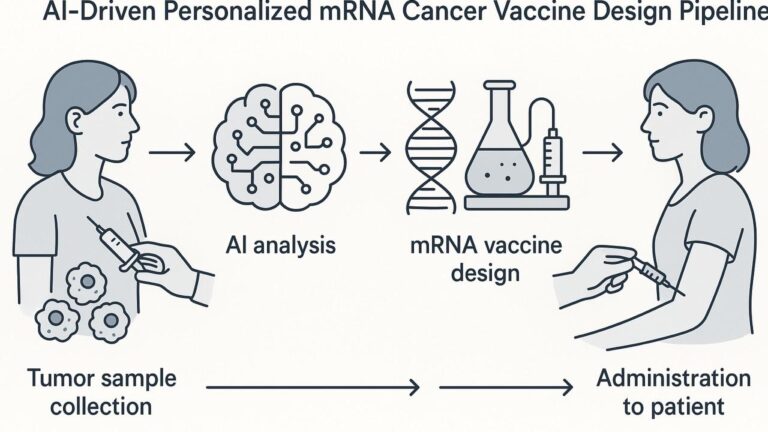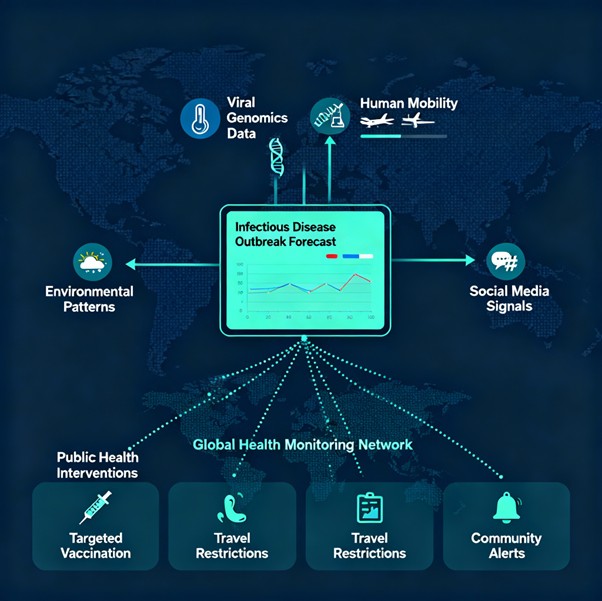Natural Language Generation Streamlines Clinical Notes: Revolutionary AI Systems Slash Healthcare Documentation Time by 50%
Healthcare professionals worldwide face an unprecedented administrative burden that threatens the very essence of patient care. Physicians spend 34-55% of their workday on clinical documentation within electronic health records, translating to $90-140 billion annually in lost productivity in the United States alone. This crushing documentation load contributes significantly to physician burnout, reduces face-to-face patient interaction, and drives talented healthcare providers away from medicine. However, revolutionary advances in natural language generation powered by large language models are transforming clinical documentation, with studies demonstrating up to 74% reductions in documentation time and 21% absolute decreases in physician burnout. This technological transformation promises to restore the joy of practicing medicine while improving patient care quality.

The Clinical Documentation Crisis
The modern healthcare system has created an unsustainable documentation paradigm that prioritizes administrative compliance over patient care. For every hour spent with patients, physicians dedicate two hours to documentation and administrative tasks. This imbalance has profound consequences:
The Burnout Epidemic
Clinical documentation burden has emerged as a major contributor to physician burnout, with studies consistently identifying it as one of the primary drivers of job dissatisfaction. The constant pressure to maintain accurate, comprehensive records while seeing increasing numbers of patients creates a vicious cycle of stress and professional exhaustion.
Quantified Impact on Healthcare Delivery:
- Average of 15.5 hours weekly spent on paperwork by physicians
- Reduces direct patient interaction time by up to 40%
- Contributes to medical errors through rushed documentation and cognitive overload
- Drives physician turnover with associated recruitment and training costs
Quality and Safety Implications
Traditional documentation methods suffer from several critical limitations that impact patient safety:
Manual Documentation Challenges:
- Time-consuming processes that delay care delivery
- Prone to errors including omissions and inaccuracies
- Inconsistent quality across different providers and specialties
- Workflow disruptions that fragment patient encounters
- After-hours work requirements that impact work-life balance
The Natural Language Generation Revolution
Large language models represent a paradigm shift in clinical documentation by automatically converting doctor-patient conversations into structured, comprehensive clinical notes. These advanced AI systems leverage sophisticated natural language processing to understand medical terminology, clinical context, and documentation requirements.
Breakthrough Performance Metrics
Real-World Implementation Results demonstrate the transformative potential of AI-powered clinical documentation:
Mass General Brigham Study: The largest healthcare system implementation revealed remarkable improvements in physician well-being:
- 21.2% absolute reduction in burnout prevalence at 84 days
- Significant improvements in documentation-related well-being
- Physicians report having “nights and weekends back”
- Rediscovered joy of practicing medicine through reduced administrative burden
Stanford Health Care Pilot: A comprehensive 3-month study with 48 physicians demonstrated substantial measurable improvements:
- Large statistically significant reductions in task load (-24.42, p <.001)
- Significant decreases in burnout scores (-1.94, p <.001)
- Moderate improvements in usability (+10.9, p <.001)
- Favorable utility ratings for efficiency, documentation quality, and ease of use
Quantified Time Savings
Multiple independent studies consistently demonstrate substantial time savings:
Documentation Time Reduction:
- 74% reduction: From 4.7 to 1.2 hours daily in clinical practice
- 50% average reduction across multiple healthcare systems
- 47.1% of clinicians reported less time on EHRs at home
- 44.7% reduction in weekly EHR time outside normal work hours
Academic Health System Trial: A randomized clinical trial involving 313 outpatient physicians across 14 specialties provided compelling evidence for AI effectiveness:
- Significant improvements in multiple burnout metrics
- Reduced time spent writing notes across intervention groups
- Enhanced physician satisfaction with documentation workflows
- Maintained or improved documentation quality despite time savings
Technical Architecture and Implementation
Advanced Natural Language Processing
Modern clinical documentation AI systems employ sophisticated multi-layered architectures that combine several cutting-edge technologies:
Core Technologies:
- Automatic Speech Recognition (ASR): Converts patient-clinician conversations into text with up to 95% accuracy
- Natural Language Processing (NLP): Understands medical terminology, context, and clinical relationships
- Large Language Models (LLMs): Generate structured clinical notes following established formats like SOAP and BIRP
- Real-time Processing: Provides immediate draft documentation during patient encounters
Intelligent Content Generation
AI systems demonstrate remarkable sophistication in understanding and structuring clinical information:
SOAP Note Generation: Advanced models automatically organize information into standardized formats:
- Subjective: Patient-reported symptoms and concerns
- Objective: Clinical findings and examination results
- Assessment: Clinical diagnosis and evaluation
- Plan: Treatment recommendations and follow-up instructions
Enhanced K-SOAP Format: Innovative approaches add keyword sections for rapid information retrieval, improving clinical workflow efficiency.
Integration with Healthcare Systems
Seamless EHR Integration ensures AI-generated documentation fits naturally into existing clinical workflows:
Key Integration Features:
- Direct EHR connectivity with major systems like Epic and Cerner
- Real-time validation and cross-referencing with patient data
- Customizable templates for different specialties and use cases
- Physician oversight mechanisms for review and editing before finalization
Specialized Applications and Clinical Outcomes
Discharge Summary Automation
Automated discharge summary generation represents one of the most successful AI documentation applications:
Brazilian Healthcare System Implementation: A comprehensive study demonstrated high-quality discharge summary generation:
- Most generated summaries rated “Very Good” or “Excellent” by physicians
- Comparable quality to human-written summaries
- Significant time savings in discharge planning workflows
- Positive acceptance by both physicians and patients
Readability Improvements: GPT-4o implementation for cardiology discharge summaries achieved substantial readability enhancements:
- 10th-grade reading level achieved across standardized metrics
- 85% correctness rating from medical expert evaluators
- 92% completeness score for clinical information
- 88% comprehensibility for patient understanding
Specialty-Specific Applications
Interventional Radiology: ChatGPT implementation for PICC line reporting demonstrated significant time savings without quality loss:
- Substantial reduction in documentation and administration time
- Maintained quality standards comparable to human-generated reports
- AI-generated texts not clearly identifiable as machine-produced
Neurology Documentation: Automated generation of hospital course texts for neurology patients achieved 62% acceptance rate by board-certified physicians as meeting standard of care.
Cardiology Applications: Specialized systems for cardiovascular documentation demonstrate particular effectiveness in complex cardiac case management.
Quality Assurance and Clinical Validation
Comprehensive Evaluation Frameworks
Robust quality assessment ensures AI-generated documentation meets clinical standards:
DeepScore Methodology: Advanced quality measurement systems evaluate multiple dimensions:
- Clinical accuracy and completeness
- Adherence to documentation standards
- Reduction in errors and omissions
- Consistency across different clinical scenarios
Multi-Dimensional Assessment: Expert evaluations consistently demonstrate high-quality outputs:
- 85-92% agreement on correctness and completeness
- 83-88% rating for clinical harmlessness
- 88-97% assessment for patient comprehensibility
Error Reduction and Safety
AI systems demonstrate superior accuracy compared to traditional documentation methods:
Performance Improvements:
- Error rate reduction from 6% to 2% under low-load conditions
- Decreased errors from 10% to 4% under high-load scenarios
- Average 60% error reduction across clinical workflows
- Word Error Rates ranging from 0.087% to 50% depending on clinical context and complexity
Addressing Implementation Challenges
Clinical Workflow Integration
Successful deployment requires careful attention to workflow integration:
Key Success Factors:
- Physician training and education on AI capabilities and limitations
- Customization for specialty-specific requirements and terminology
- Gradual implementation to ensure smooth adoption
- Continuous monitoring and improvement based on user feedback
Facilitators and Barriers: Qualitative studies identify critical factors for successful adoption:
- Positive impact on workload and work-life integration
- Enhanced patient engagement through reduced screen time
- Need for system reliability and consistent performance
- Importance of user-centered design and intuitive interfaces
Regulatory and Compliance Considerations
HIPAA and Privacy Compliance: AI documentation systems must maintain strict privacy and security standards:
- Secure AI model training with anonymized datasets
- Encryption and access controls for sensitive patient information
- Audit trails and compliance monitoring for regulatory requirements
- Physician oversight and accountability for clinical decisions
Economic Impact and Healthcare Transformation
Cost-Effectiveness Analysis
Substantial economic benefits accompany the clinical improvements from AI documentation:
Healthcare System Savings:
- $90-140 billion annual opportunity cost recovery in the United States
- Reduced overtime and after-hours work for healthcare providers
- Improved physician retention through reduced burnout
- Enhanced productivity enabling more patient encounters per provider
Return on Investment: Healthcare systems report rapid ROI realization through:
- Reduced documentation time freeing providers for patient care
- Improved coding accuracy enhancing reimbursement
- Decreased administrative overhead and staffing requirements
- Enhanced job satisfaction reducing turnover costs
Scalability and Global Impact
Worldwide Market Expansion: The natural language processing healthcare market demonstrates remarkable growth potential:
- $6.66 billion market size in 2024
- Projected growth to $132.34 billion by 2034
- CAGR of 34.74% between 2025 and 2034
- Global adoption across diverse healthcare systems and regulatory environments
Future Directions and Innovation
Advanced AI Capabilities
Next-generation systems promise even greater sophistication:
Emerging Technologies:
- Multimodal AI integration combining text, speech, and clinical data
- Predictive analytics for proactive clinical decision support
- Personalized documentation tailored to individual physician preferences
- Real-time clinical decision assistance during patient encounters
Specialized Medical Applications
Domain-Specific Applications continue expanding across medical specialties:
- Radiology report generation from imaging studies
- Pathology documentation from laboratory findings
- Surgical notes from operative procedures
- Chronic disease management with longitudinal care documentation
Integration with Emerging Technologies
Convergence with other healthcare innovations amplifies AI documentation benefits:
- Telemedicine platforms with automated visit documentation
- Wearable device integration for continuous monitoring documentation
- Clinical decision support systems with embedded documentation capabilities
- Population health management with automated outcome reporting
AI Documentation Time Savings Pipeline

Conclusion: Restoring the Joy of Medicine
Natural language generation represents a transformative force in healthcare that addresses one of medicine’s most pressing challenges—the crushing burden of clinical documentation. The compelling evidence from multiple large-scale implementations demonstrates that AI-powered documentation systems can reduce physician documentation time by up to 74% while maintaining or improving quality.
More importantly, these systems are restoring physicians’ ability to focus on what they do best—caring for patients. The 21% reduction in burnout rates and physicians’ reports of having their “nights and weekends back” represent profound improvements in healthcare provider well-being that ripple through the entire healthcare system.
As healthcare systems worldwide grapple with physician shortages, burnout epidemics, and rising administrative costs, AI-powered clinical documentation offers a practical, immediately implementable solution that benefits providers, patients, and healthcare organizations alike. The technology has moved beyond experimental phases to become an essential tool for modern healthcare delivery.
The future of clinical documentation is not about replacing physicians with machines, but about leveraging artificial intelligence to amplify human capabilities and restore the human connection that lies at the heart of healing. Through continued innovation, regulatory support, and thoughtful implementation, AI-powered documentation systems will play an increasingly central role in creating a more sustainable, efficient, and fulfilling healthcare environment for providers and patients worldwide.
The transformation is already underway, and the results speak for themselves: fewer hours spent on documentation, more time with patients, reduced burnout, and renewed joy in the practice of medicine. This is not just technological progress—it is the restoration of healthcare’s fundamental mission.






